Japan is famous for its agricultural produce. Not just meat and fruits, but vegetables as well. From well known produce like radish and kabocha, to the lesser known gobo aka burdock root and bamboo shoots, learn about Japanese vegetables, where to shop for the best of them, and some recipes.
Table of Contents
- Cultivation of Vegetables in Japan
- Vegetables Unique to Japan
- Other Vegetables Popular in Japan
- Where to buy vegetables in Japan?
- Some recipes to try:
- Summary
Cultivation of Vegetables in Japan
From mushrooms to exotic fruits, Japan is known to produce only the best agricultural produce despite its small-sized farmlands. Or perhaps because of its small-sized farmlands.
According to an article published by United Nations University, urban agriculture is thriving in Japan. As a matter of fact, ⅓ of agriculture in the country is supplied from urban areas and not rural. This is especially important as urban agriculture encourages urban residents to engage in agricultural activities especially as young people these days find the prospect of living in rural areas unwelcoming which leads to insufficient manpower.
※ United Nations University, "Japan’s Urban Agriculture: Cultivating Sustainability and Well-being"
Japanese Farming Skills
Due to the lack of land, Japan adopts a unique form of farming involving maximising the usage of limited farmspace and focusing on seasonal produce. Majority of flatlands are used for paddy planting, whilst terrace farming is employed for other types of plants and grains.
Farmers also take advantage of the seasons to interchange plants. For example:
-
Spring
Goya (bitter gourd), tomato, cherry tomato, kabu (turnip) -
Summer
Cabbage, hakusai (white cabbage), broccoli, lettuce -
Autumn
Grains, sweet potatoes
Japanese farmers have also started adopting technology to improve their farming methods. Over the years, the modern methods for farming have been developed; the use of fertilizers, technologies to ensure high yield, and modifying stiff ranges to earth plowing have all been incorporated. For example, many farms in Japan have started to use LED lights to aid in high-tech urban farming. This allows vegetables to grow in consistent conditions regardless of weather conditions of the country.
Writer's Pick
Vegetables Unique to Japan

Wasabi
Also known as Japanese horseradish, wasabi is the most famous of Japanese vegetables often served as a condiment to sushi or sashimi to mask the fishy smell and taste. Wasabi belongs to the Brassicaceae or mustard family and is said to have been consumed as early as the Asuka period (538 - 710). It has a distinct pungent smell and taste, including its infamous spicy heat.
Wasabi is great for our health with antibacterial and anti-inflammatory properties. Aside from its condiment usage, there are plenty of enjoyable wasabi flavoured snacks available in supermarkets.
※ Encyclopaedia Britannica, “Wasabi”
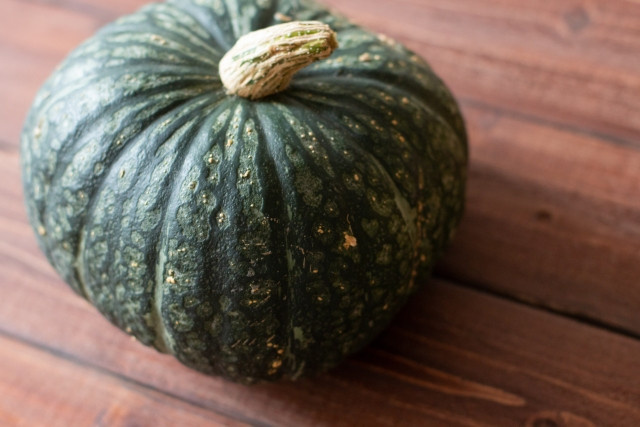
Kabocha
Also known as Japanese pumpkin, it is a Japanese variety of winter squash. Compared to a Western pumpkin, kabocha is much smaller and flatter with green outer skin. Its texture when cooked is similar to sweet potatoes - drier and starchier, rather than soft and liquidy like the Western pumpkin. It is said to taste like a cross between a pumpkin and sweet potato.
Popular Japanese recipes using kabocha include simmered kabocha (you can get this precooked in refrigerated sections at supermarkets), croquettes, salad, pie, soup, gratin, and even pudding. Kabocha is high in vitamin A. The best season for Kabocha is autumn when many cafes start selling kabocha desserts.
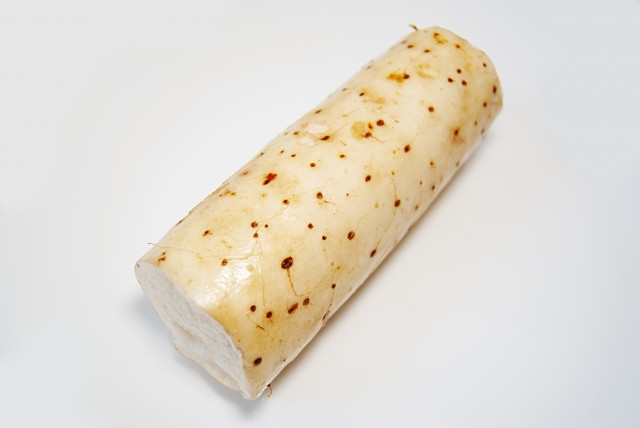
Japanese Yam
Also known as Japanese mountain yam. It has a long slender shape. Japanese yam can be eaten raw or cooked. Grated Japanese yam also called tororo (とろろ) is a sticky starchy substance that can be a side dish, or a topping on rice, udon, and soba.
Japanese yam is high in saponin which is anti-carcinogenic and anti-inflammatory amongst other benefits.
※ MAFF, “Japanese Fruits & Vegetables: Japanese Yam” Pg. 21
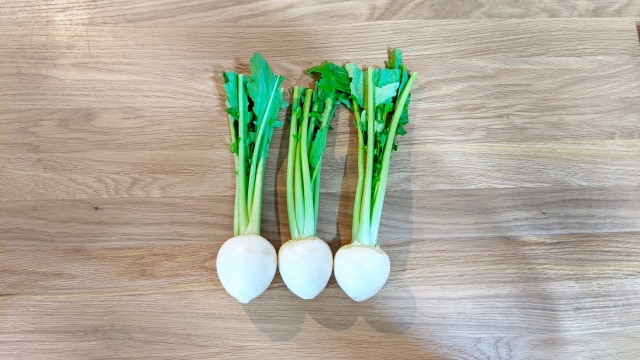
Kabu
Also known as Japanese turnip or Tokyo turnip is a Japanese variety of turnip. It has a white bulb shape. It tastes nutty and sweet. Kabu is a versatile ingredient. Aside from eating it raw, having sliced it thinly and adding it to salads; you can also add them into soup, stir-fry them, add to stew, etc.
Just like regular turnips, kabu is chocked full of fibre and vitamins. High consumption of turnips is said to be good for cancer prevention.
Other Vegetables Popular in Japan
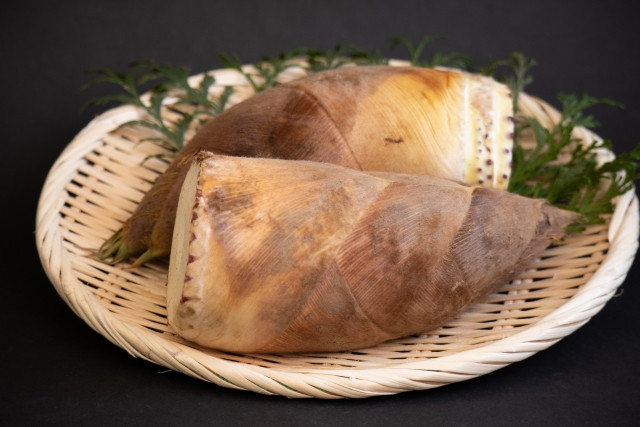
Bamboo Shoots
Also known as Take-no-ko, which literally means bamboo child or child of bamboo, is a popular vegetable in Japan. A lot of people find preparation of bamboo shoots troublesome as it involves trimming the shoot, boiling it, then slicing it before adding it to a dish. Improper preparation may result in an overwhelming smell and taste and leftover bitterness. To save yourself the trouble, you can find canned take-no-ko or pre-prepared take-no-ko in supermarkets.
Popular dishes made with bamboo shoots include take-no-ko gohan (bamboo rice) and simmered bamboo shoots. They are also frequently used as ramen toppings. In the anime Emiya-san Chi no Kyou no Gohan (Today's Menu for the Emiya Family), take-no-ko was used in a gratin dish.

Gobo
Also known as Burdock Root, Gobo is a popular root vegetable in Japan. It may look hard, but once fully cooked it becomes soft and mushy. It is another extremely versatile ingredient that can be eaten raw, made into tea, used in herbal medicine, cooked, stewed, fried, and more.
The most popular gobo dish in Japan is kinpira gobo (braised gobo). Gobo is also a key ingredient in Tonjiru (Pork Miso Soup), giving it its unique taste and fragrance. Burdock root is good for digestion as it contains dietary fibers. It is also low in calories and contains antioxidant and detoxification properties.
※ Cezar’s Kitchen KK, “Burdock Root Nutrition Facts”

Negi
Also known as Japanese Long Onion and Japanese Bunching Onion, negi is also available in other Asian countries, but somehow just tastes better in Japan.(Just us?) Never the main star of the dish but essential for a dish’s completion, negi can be added to numerous dishes.
Popular negi dishes include negi miso soup and negi tamagoyaki. Aside from that, the white part of the negi is frequently cut in big chunks and added to nabe or shabu-shabu soup at the beginning. The negi is not meant to be eaten, it is added only for flavoring purposes, and removed before the dish is served. Chopped up negi is also frequently used as a noodle topping.
Potatoes
Called jaga-imo in Japan is a classic ingredient in plenty of family favourite dishes like Japanese curry (kare) and Japanese potato meat stew (nikujyaga). Other popular dishes include the izakaya favourite potato salad, and street snack buttered potato (jyagabata).
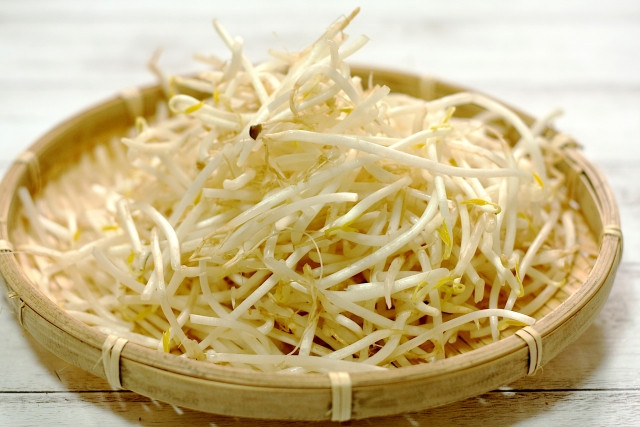
Bean Sprouts
Also known as a moyashi, this is the salvation of poor university and foreign students in Japan with a packet selling as low as 15 yen. Bean sprouts are as its name implies the sprouts of beans. They can be eaten either raw or cooked. Bean sprouts are an excellent source of antioxidants, aside from being loaded with nutrients.
Popular bean sprout dishes include spicy bean sprout salad and moyashi itame (stir fried bean sprouts). There are also restaurants in Japan that offer unlimited bean sprouts.
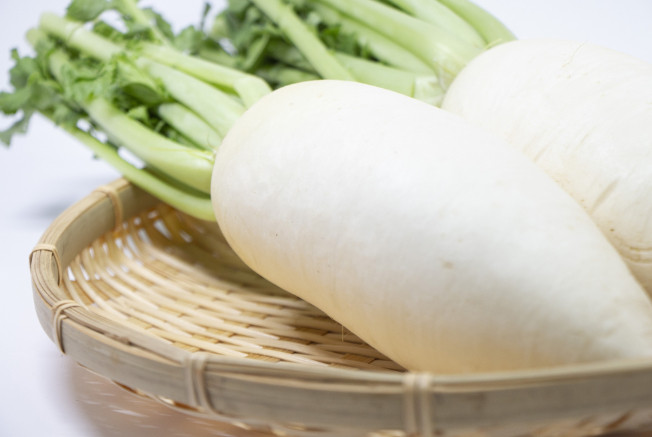
Daikon
Also known as white radish or winter radish, this is native to Asia. Daikon can be eaten raw or cooked.
One of the most common daikon recipes in Japan is oroshi (grated daikon) which is usually an accompaniment to a main dish, usually tamagoyaki or grilled fish. The sweetness and refreshing sensation of the daikon pairs well to reduce the heat of the main dish. Other ways of cooking daikon include simmering in broth like winter oden, and nabe.
Daikon is a healthy vegetable that contains magnesium and potassium. Oroshi is especially pleasant to have in summer to cool down.
Where to buy vegetables in Japan?
Aside from supermarkets like Aeon, Life, Seiyu, Gyoumu and more, vegetables in Japan can be bought from morning markets, farmers markets, independent greengrocers, online markets, health food stores, and even from Furusato Nozei.
Here are some interesting places to get your vegetable fix:
Pickled Vegetables
Termed as Kyoto’s Kitchen, Nishiki Market doesn’t only sell the freshest of vegetables and fruits, they also have tofu, sweets, fish, meats, and street foods like skewers, croquettes, and more. Don’t miss out on Kyoto Tsukemono, unique pickles that you can find only in Kyoto.
Though not a market, another great place to get pickled vegetables is in Koedo Kawagoe.
Morning Markets
Ishikawa Prefecture’s Wajima Morning Market, held along Asaichi-Dori (朝市通り), is a long market stretching 360 meters selling all manner of street foods, seafood, fresh vegetables and fruits, processed foods, handmade craft goods, and souvenir items. This morning market’s history dates back to at least 1,000 years ago. To start a business along this street is a matter of pride as businesses are required to display their full name in view and permission from the market union is required, it is no surprise then that many of these businesses are passed down from generation to generation.
Other famous morning markets include the Hakodate Morning Market at Hakodate, Hokkaido. Though the biggest attraction are the seafood rice bowls, seafood and fruits, the vegetables don’t lose out with Hokkaido famous potatoes, corn cobs, and pumpkins. There is also Aomori Prefecture’s Tatehana Morning Market, which is the area’s largest morning market.
Farmers Markets
The most famous farmers market in all of Japan is the Aoyama Farmers Market, or its proper name Farmers Market @ UNU. With over 40 vendors that come from all over Japan, this market has a wide assortment of fresh vegetables, fruits, rice, roots, honey, and even cooked foods. There are also all manner of processed products like jams, wines, baked goods, soups, cheeses, etc. Note that the market only operates on weekends.
Some recipes to try:
Salads
Potato Salad
Potato salad is a staple family and izakaya dish. This dish has been in local restaurant’s menus for more than 100 years.
Main Ingredients:
-
2 Boiled Cooled Potatoes
-
4-6 Tbsp Mayonnaise
-
Salt & Pepper for seasoning
Optional Ingredients:
-
Sliced Carrots
-
Cooked Corn
-
Sliced Cucumber
-
Ham, sliced into strips
-
Sliced Hard-boiled Eggs
All you have to do is mix the ingredients together and refrigerate it for at least 30 minutes to get it nice and cool before serving.

Gobo Salad
Main Ingredients:
-
1 thinly sliced Gobo Stick (soak in water)
-
Thinly sliced Carrots
-
4 Tbsp Mayonnaise
-
1½ Tsp Sugar
-
½ Tsp Rice Vinegar
-
½ Shoyu
-
½ Tsp Sesame Oil
Firstly, blanch the gobo and carrots for 1-2 minutes until softened yet slightly crunchy. The gobo will take longer than the carrots so do them first. After draining the cooked gobo and carrots, combine with the other ingredients except mayonnaise. Add the mayonnaise when everything has cooled down. You can add toasted sesame seeds to give it a more earthy taste. Gobo salad is usually eaten as a side dish in Japanese bento meals.
Pickled Dishes
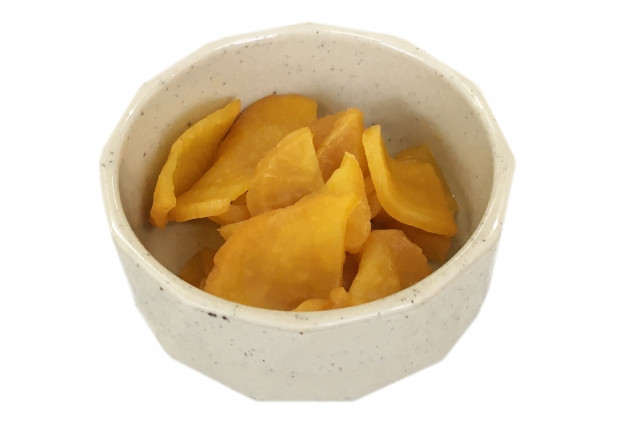
Japanese Pickled Radish
Called Takuan in Japan is the yellow pickled radish commonly served with bento.
Main Ingredients:
-
Daikon sliced into half circles
-
Sugar
-
Salt
-
Vinegar
The ratio of D:SU:SA:V is 50:10:2:2. That’s 500g daikon, 100 grams sugar, and 20 grams each salt and vinegar. You can tweak this depending on your taste preference. Combine everything into a container or ziplock bag and refrigerate for at least 1 day. To get the yellow hue, use food dye or turmeric powder.
Cooked Dishes
Yasai Itame
Also known as stir-fry vegetables is a mixture of cabbage, carrots, bean sprouts, basically any vegetables available in your fridge. Fry sliced onions in butter, then add in the vegetables. Season with salt and pepper. The dish is ready when the vegetables have softened.
You can also add soy sauce, oyster sauce, sesame oil, or garlic to change it up a little.
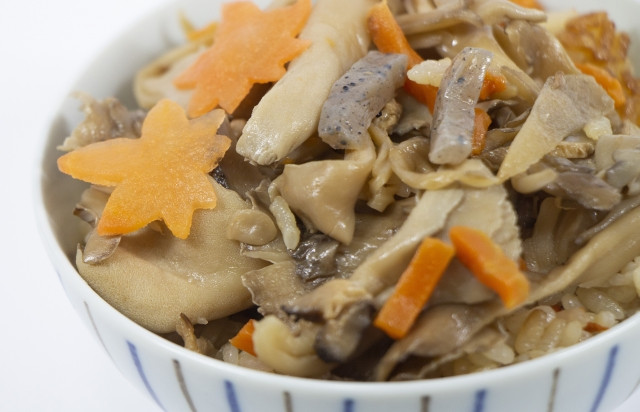
Takikomi Gohan
Also known as the five-ingredient dish as it can be made with only 5 ingredients.
Main Ingredients:
-
2 cups Uncooked Japanese Rice
-
3 Rehydrated Dried Shiitake Mushrooms
-
1½ cup Dashi including shiitake water from rehydrating
-
1½ Tbsp Mirin
-
1½ Tbsp Shoyu
Choose 4 ingredients. These 4 can be anything from aburaage (tofu skin pouch), meat, konnyaku (konjac), vegetables (lotus root, gobo, carrot, bamboo shoot), tofu, wakame (seaweed).
Soak the rice in water for at least 30 minutes then drain dry. Combine all the main ingredients except the shiitake mushrooms in a rice cooker, then add the sliced ingredients including shiitake mushrooms atop the rice. Place the ingredients according to texture - hard below soft above. Cook it in the rice cooker. When done, mix it all up.
Summary
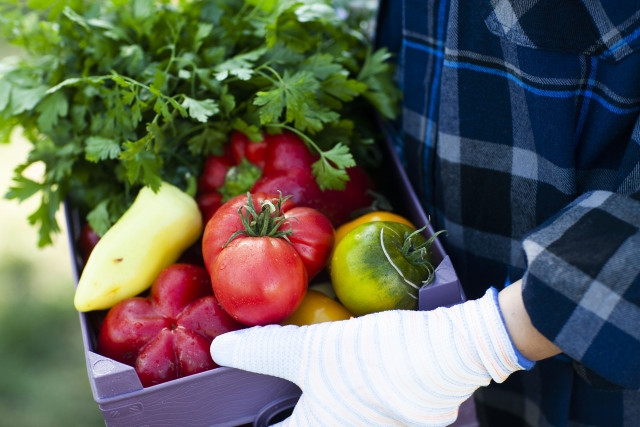
Japanese vegetables are very different from vegetables in other lands, allowing culinary enthusiasts to create unique dishes. Just reading about this must make you eager to try them out for yourselves! There’s no better place than the mainland though, so we hope to see you here soon.

































